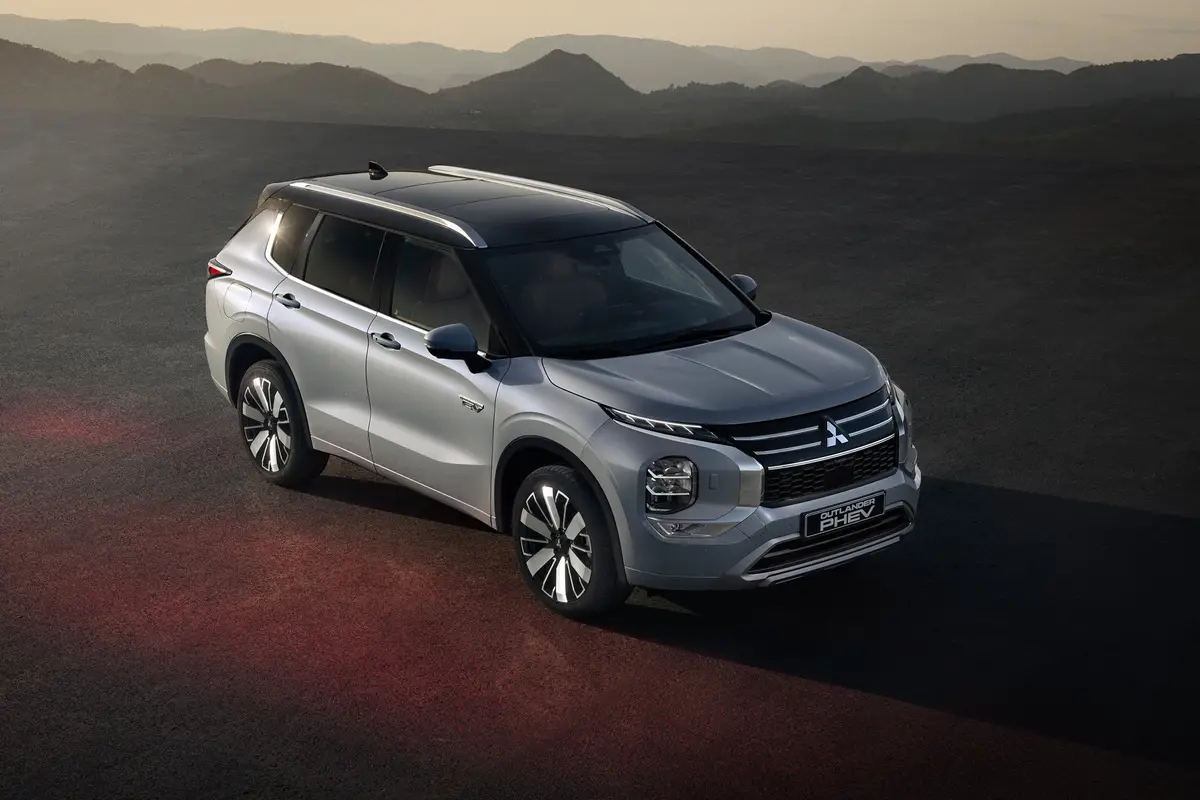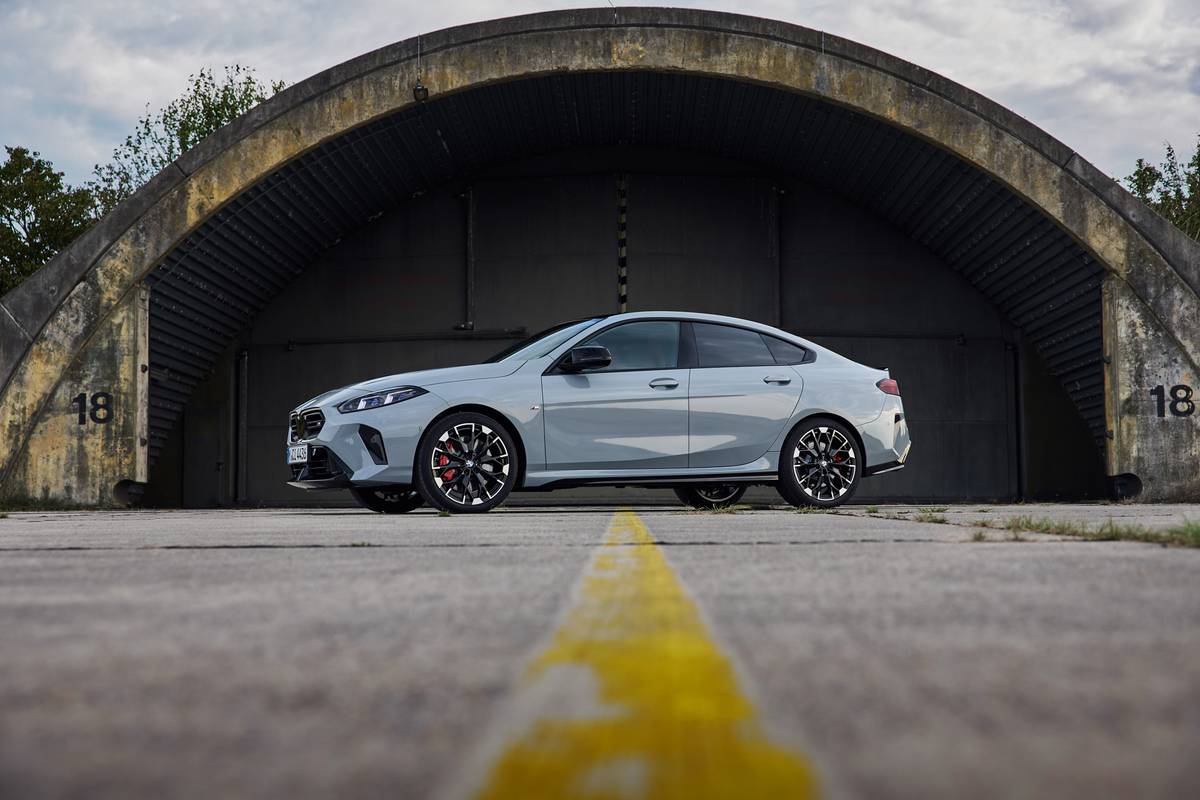Cincinnati.com's view
Now you’re talking, Ford. The two-wheel-drive version of the new Ford Escape was, I found, a pleasant station-wagon-in-disguise. But — forgive me for being a strict constructionist — to be even a mini-ute or a cute ute requires that all four wheels be driven, at least some of the time. And the game little 2-liter four-cylinder engine that suffices for a front-drive machine invites scorn and derision in a four-wheeler. So I was glad to book a rematch in a 4×4 Escape with six-cylinder power. The two machines were as different as one might expect $6,000 to make them. The undistinguished adequacy of the 2×2 became class-contender worthiness in the 4×4.
The Escape plays in the same arena as Honda CR-Vs, Toyota RAV4s and the Suzuki Grand Vitara (and its Chevy sibling). In some respects, it can unquestionably claim superiority. For openers, the powerplant. The 3-liter, all-aluminum Duratec V-6 makes 200 hp (@5,750 rpm) and 200 foot-pounds of torque (@4,000). This is best in class, and a remarkable 53 percent improvement in power and 48 percent boost in torque over the 4-banger engine. To put the propulsive element in focus, the Escape in its most elaborate form (4×4, V-6) weighs a trim 3,457 pounds. With those numbers, eight-second 0-60 times are easily within reach, even with the automatic stealing some power. Ford was wise to go this route, because the big rap on the very popular Japanese competitors has been their lack of oomph.
With the V-6 engine, a four-speed automatic transmission is mandatory. (Early on they talked of a five-speed automatic, but that didn’t make it, at least for the start of production.) It shifted smoothly and reasonably fast, though it could hardly be styled crisp. Its “intelligence,” I’d say, was dull-normal, in terms of assessing and reacting to road conditions and driver input. Overdrive, which can be disabled via a switch on the end of the column-mounted shifter, is waaay up there, a 0.698 reduction ratio. This translates into about 33 mph per 1,000 engine revolutions. That’s an engine-sparing and fuel-consumption-minimizing strategy that makes for very little compression braking in third or fourth, and also makes the gaps between the first three gears seem rather wide.
The V-6 — quite similar to the one used in Taurus — likes to spin fast and is a trifle peaky, with a noticeable power bounce around 4,000. Beyond that it snarls like a junkyard dog with a bone, but happily pushes to the redline. EPA estimates on the V-6 4×4 are 18 mpg city, 24 highway. My running total was 21.1, and that involved considerable slogging under low-traction conditions. The day the Escape arrived, we had an inch or so of snow. The Escape was blocked by a front-wheel-drive machine, so I tried to move the latter and quickly bogged down at the start of my uphill driveway. I abandoned it and maneuvered the Escape around it. Even in “Auto” mode, the Escape flew up the drive, even though I tried to provoke wheelspin with heavy throttle.
The Escape is by default a front-wheel-drive machine, i.e., all the power goes to the front wheels if they can handle it. With a two-position dashboard switch in the “Auto 4×4” position, varying amounts of power can be sent rearward when the front tires lose their grip. It’s a reactive system, like those used by Honda and Toyota, but, like theirs, quick enough for most circumstances.
When things get rougher, one can turn that switch to 4×4 Lock, which binds the front and rear axles together for a 50-50 power split. This is like the conventional part-time four-wheel-drive Hi setup, and should only be used when the road surface is very slick. Otherwise excessive tire and drivetrain wear will occur in turns because of the dissimilar amounts of ground the wheels are covering. I used it during a very heavy rain and could scarcely tell the difference from the “Auto” mode.
One thin that’s lacking on all the machines of this sort is a low-ra transfer case, but considering how little it would be used, I think that’s a good design decision. Although claiming the Escape is a “go-anywhere” machine, Ford doesn’t want us to take that too literally, elsewhere qualifying it as suited to an urban environment. I wouldn’t want to get too far off the beaten in it, first because it’s rather light-duty of construction, and second, because ground clearance is just 7.8 inches.
The baby of Ford’s E-Series machines (Explorer, Expedition, Excursion), Escape is the most carlike, with a modest height of 68 inches (still much taller than a car) and a compliant suspension tuned for comfort. It’s easy to get into — at least up front– and once you’re there, you’ll find abundant headroom and a sufficiency of legroom unless you’re far bigger than the norm. The Escape is 17 inches shorter than its big brother, Explorer, but just as wide, and the wheels are farther apart laterally, which argues for greater stability. Its interior volume is nearly 133 cubic feet, best in class, with 34.8 cubic feet of cargo room behind the second row of seats, and 68.5 cubic feet with them folded down (which unfortunately requires removal of the headrests). The cargo area is accessed via a vertically-opening hatch, but there’s also a handy flip-up window.
The Escape in 4×4, V-6 form is rated to tow as much as 3,500 pounds. If you’re going that high, ask yourself whether you feel lucky. The noise level at freeway speeds was moderate, although rather a lot of tire noise was evident over siped concrete. Steering was light and quick, and, with a turning radius of 36 feet (with the 16-inch wheels), the Escape felt quite maneuverable in tight places. Brake pedal feel was a bit squishy (drums are used in back), but stops from 70 were swift and undramatic, even when I forced the antilock system to intervene. The stereo, though upgraded, was undistinguished in sound quality and sub-par in tuner sensitivity.
The National Highway Traffic Safety Administration has not yet released results of its frontal crash testing of the Escape, but has given it its highest rating for side-impact protection of both front and rear passengers. Nothing yet from the Insurance Institute. One caveat: I always warn that “first-year” vehicles are something of a gamble. This is especially true in the case of the Escape, which has had an unusual number of “issues” in its first months. Ford has aggressively addressed these, but still . . . Escapes are assembled in a renovated plant in Claycomo, Mo. Build quality on the sample tested here was very good.
Base price on the 4×4, V-6-powered Escape with the fancier XLT trim is $22,300. (The V-6, automatic transmission and 16-inch wheels are shown as a package that costs $1,480.) The starting price includes such goodies as air conditioning, alloy wheels, solar glass, power windows, locks and outside mirrors, auto headlamps, roof rack, rear defroster and wiper, cruise contro l, AM-FM-cassette-CD stereo, console, cargo cover, remote keyless entry, security immobilizer system and antilock brakes. The tester also had side step bars (hardly needed because of the low sill), $275; power moonroof, $585; radio upgrade, $505; “comfort group” (leather-wrapped steering wheel, leather seating and 6-way power driver’s seat), $870, and side air bags, $345. Total, with freight, was $25,395.
“The Gannett News Service”
Latest news



